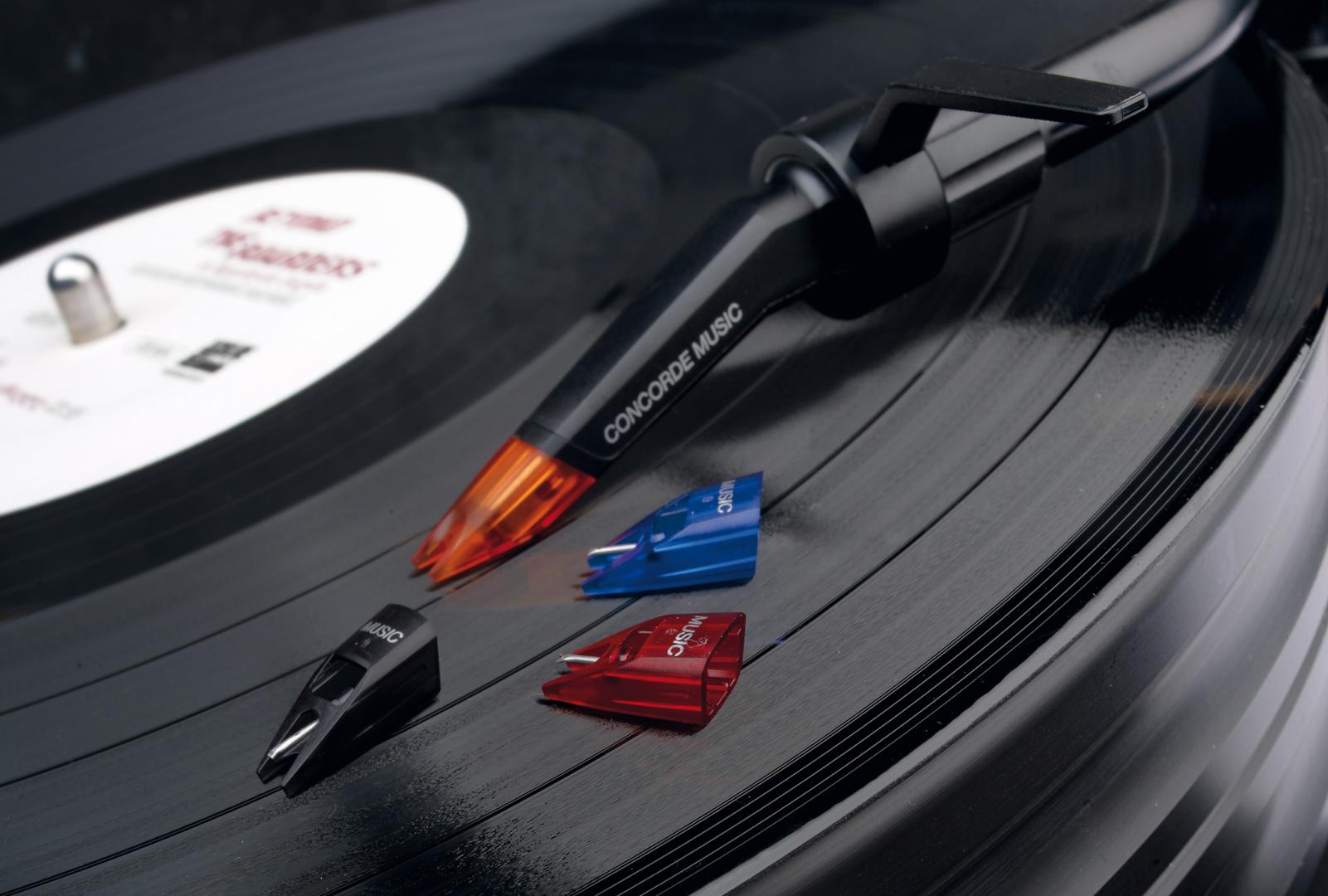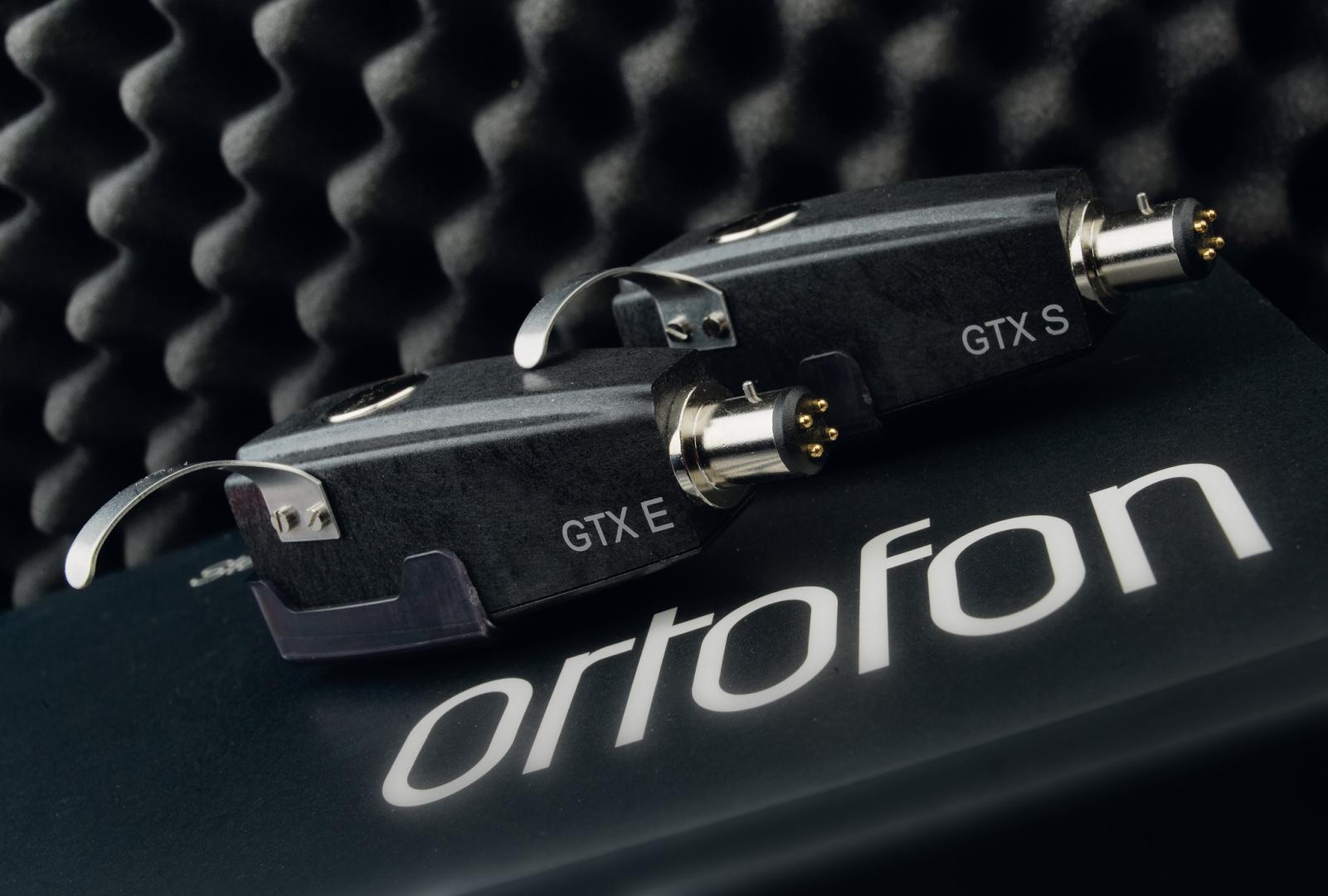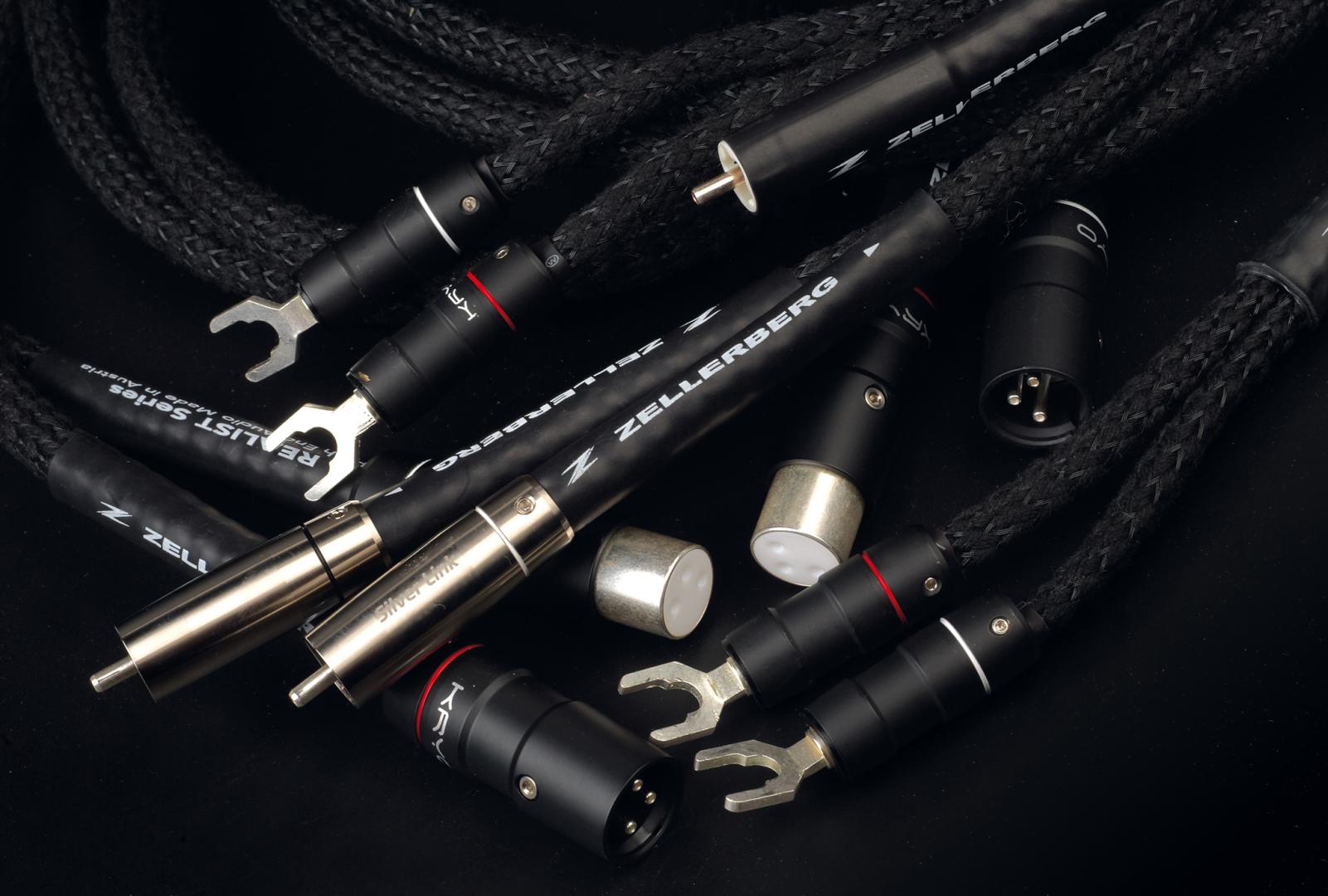Hardly any other cartridge series in the world enjoys such a high level of recognition as the Concorde family from Ortofon. Which is not the fault of hi-fi enthusiasts. It´s time to change that.
Pickup Cardridge Ortofon Concorde Music
Historical
The second cartridge in my hi-fi „career“ was an Ortofon Concorde. Please don´t ask me what kind, it replaced a Shure M- 70B that I had mercilessly noodled down on my Aiwa direct drive (AP-2200). That must have been around 1980. Back then I thought it was stupid to just change the needle, it had to be this incredibly stylish, streamlined thing from another world, especially as a student‘s budget only just allowed for it. Was it any good? I can´t say, but I used it for a long time and never had any complaints about the sound.
Conceptual
One of the aims when developing the series was to make handling the pickups as easy as possible. No fiddling with headshells and tiny screws, no struggling with overhang and offset. What was needed was a tonearm with an SME connection, a Concorde could be mounted in two simple steps, the tracking force and anti-skating adjusted according to the scale after balancing - and that was it. To this day, generations of DJs work in exactly the same way and know nothing else at the end of the tonearms of their Technics direct drive systems. And it was precisely these people, to whom we owe the survival of vinyl culture in no small part, who were the intended target group for supersonic cartridges from the outset. To this day, there are a myriad of different models for professional use. Even those that can cope with scratching without any problems. While Ortofon has always placed particular emphasis on durability and a particularly voluminous and powerful sound image in its DJ cartridges, there is now finally a series aimed at the ambitious hi-filistener, the „Concorde Music“ series. It consists of five models, of which the flagship, the Concorde Music Black LVB 250, was not ready in time for this test and we can only deal with the four other models for the time being. The journey begins with the Concorde Music Red model for 150 euros, followed by Blue, Bronze and Black for 250, 400 and 600 euros. The Black LVB 250 will cost 1000 euros when it becomes available. If the nomenclature reminds you of Ortofon´s well-known 2M series, you´re right: there‘s also a corresponding color coding, and the pricing is very similar to the Concorde Music models.
Constructive
All models in the series are based on the same generator and differ only in the needle insertion. This is also the same as the 2M models. However, the generators of both series are obviously not identical, there are small differences in the technical data. For example, the Concorde Music models have a slightly higher output voltage (an impressive 6 millivolts) and offer a slightly improved scanning capability (80 μm). They are also slightly more rigidly suspended than the 2M models. Ortofon uses the proven in-house design with four coils wound from silver-plated OFC copper on separate pole pieces. Great importance is attached to the special compound for the damping rubber. So far everything as usual, the special features are in the details.
Needle inserts
The needle inserts are interchangeable. So you can take your fi rst steps into the world of Concode Music with the Red model without any problems and upgrade to higherquality diamonds later. In fact, the plug-in units are even compatible with a large proportion of the DJ systems in the Concorde series.
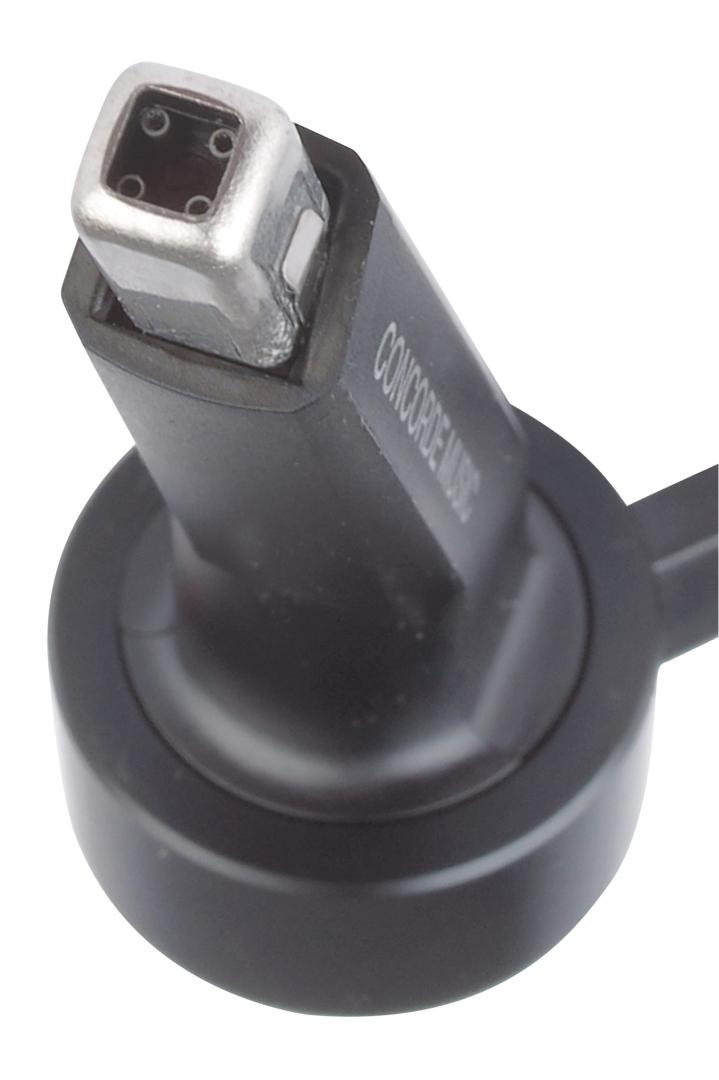 Attaching and removal of the needles is pleasantly simple
Attaching and removal of the needles is pleasantly simple The basic „Red“ model is characterized by an aluminium needle carrier with an elliptical diamond. It is held in place by adhesive. The next larger model, the „Blue“, is similar, but not quite: here there is a „naked“ diamond that is held in place without glue, it is clamped in an opening in the cantilever. This arrangement has the advantage of a lower moving mass, so that the needle can follow the flank of the groove more easily. The „Bronze“ also has an aluminum cantilever and a bare diamond, but in this case it has a fine line cut. This very narrow design can follow the flank of the groove better, which noticeably improves the tracking ability. This leaves the „Black“, which uses a needle with the famous Shibata cut. Its shape comes closest to that of the cutting stylus, which is why it ensures the most intensive contact with the flank of the groove.
Sound For the listening test, I mounted the system in a 12“ tonearm from Thomas Schick. Apart from a tonearm scale, it took some getting used to, but was not unpleasant. Ortofon specifies the optimum tracking force as 18 mN, and there is no need to make any corrections when changing styli. The „Red“ turned out to be a successful all-rounder. It doesn‘t sound spectacular at any point, but it doesn‘t have any weaknesses either. The „Blue“ insert shows that the difference between a glued and a plugged-in diamond is already clearly audible: especially in the bass, it was able to showcase itself with a much crisper and more contoured reproduction. The powerful low-frequency eruptions on „Spiritchaser“ by MFSL were certainly more convincing than the Red. With the Bronze, serious audiophile qualities are slowly emerging. The transparency with which this variant presents Hannes Wader‘s „7 Lieder“ in the room makes many an MC sweat, it sounds very tight and lively. Finally, Black goes in the same direction, but goes one better in all respects. With it, we have slowly arrived in seriously high-end territory and enjoy the fervor of a Ryan Adams and the intensity of a Nina Simone. Personally, I think the Blue is ideal for rock/pop listeners; for more demanding music, the Bronze offers the most for the money.
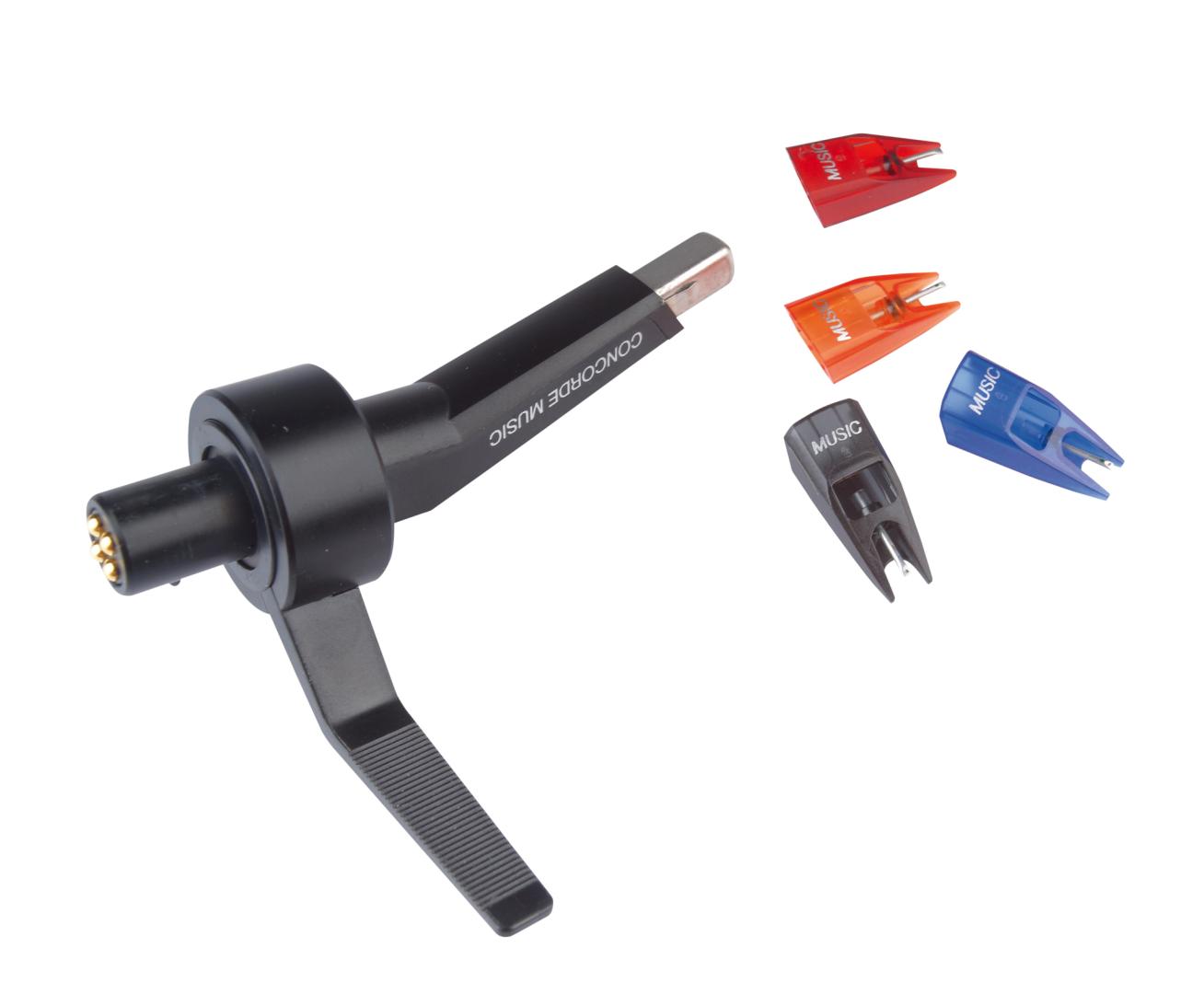 All four styli fit on the same Concorde system body, making it easy to upgrade
All four styli fit on the same Concorde system body, making it easy to upgrade
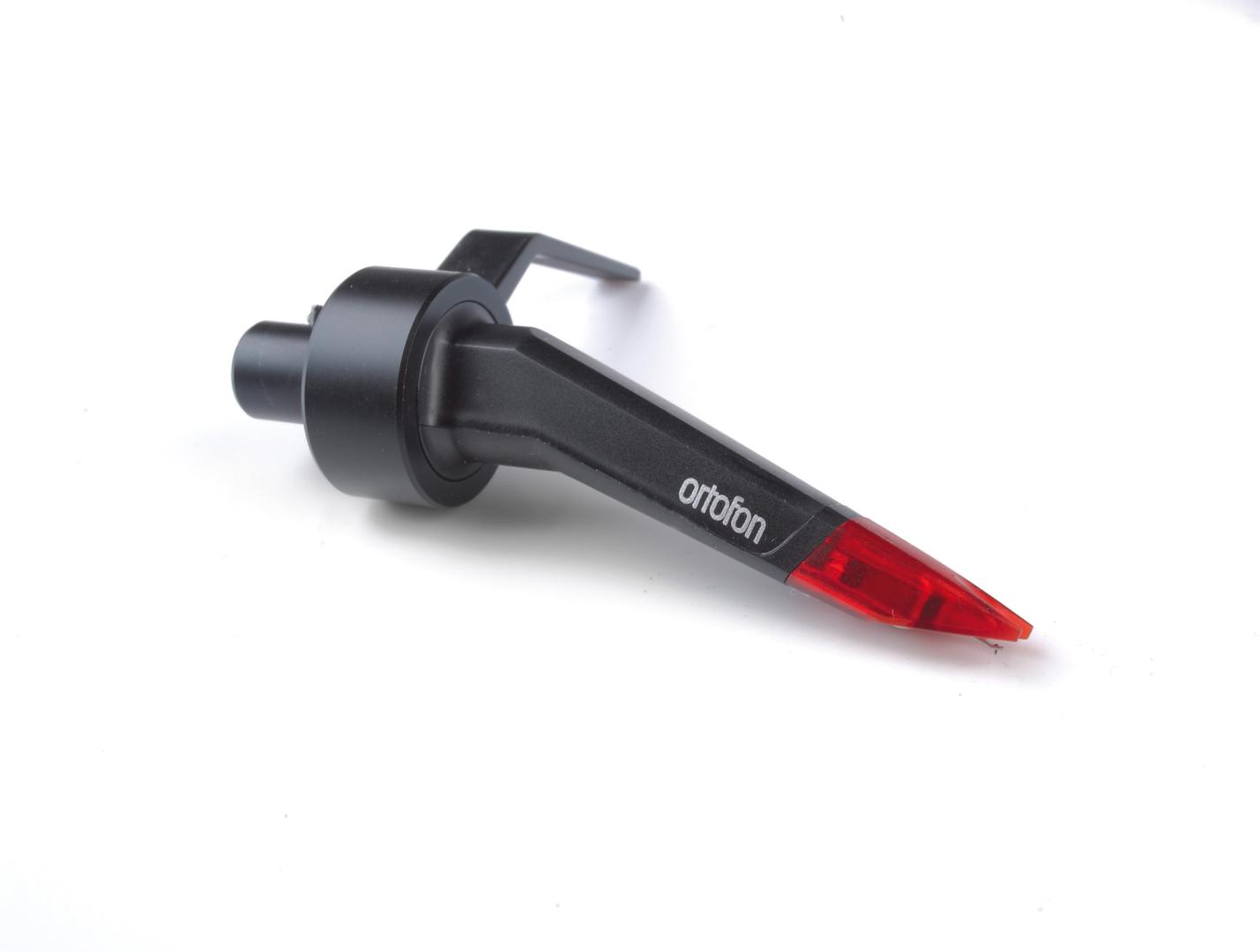 If required, a rubber ring can be placed between the system body and the tonearm
If required, a rubber ring can be placed between the system body and the tonearm
 Attaching and removal of the needles is pleasantly simple
Attaching and removal of the needles is pleasantly simple
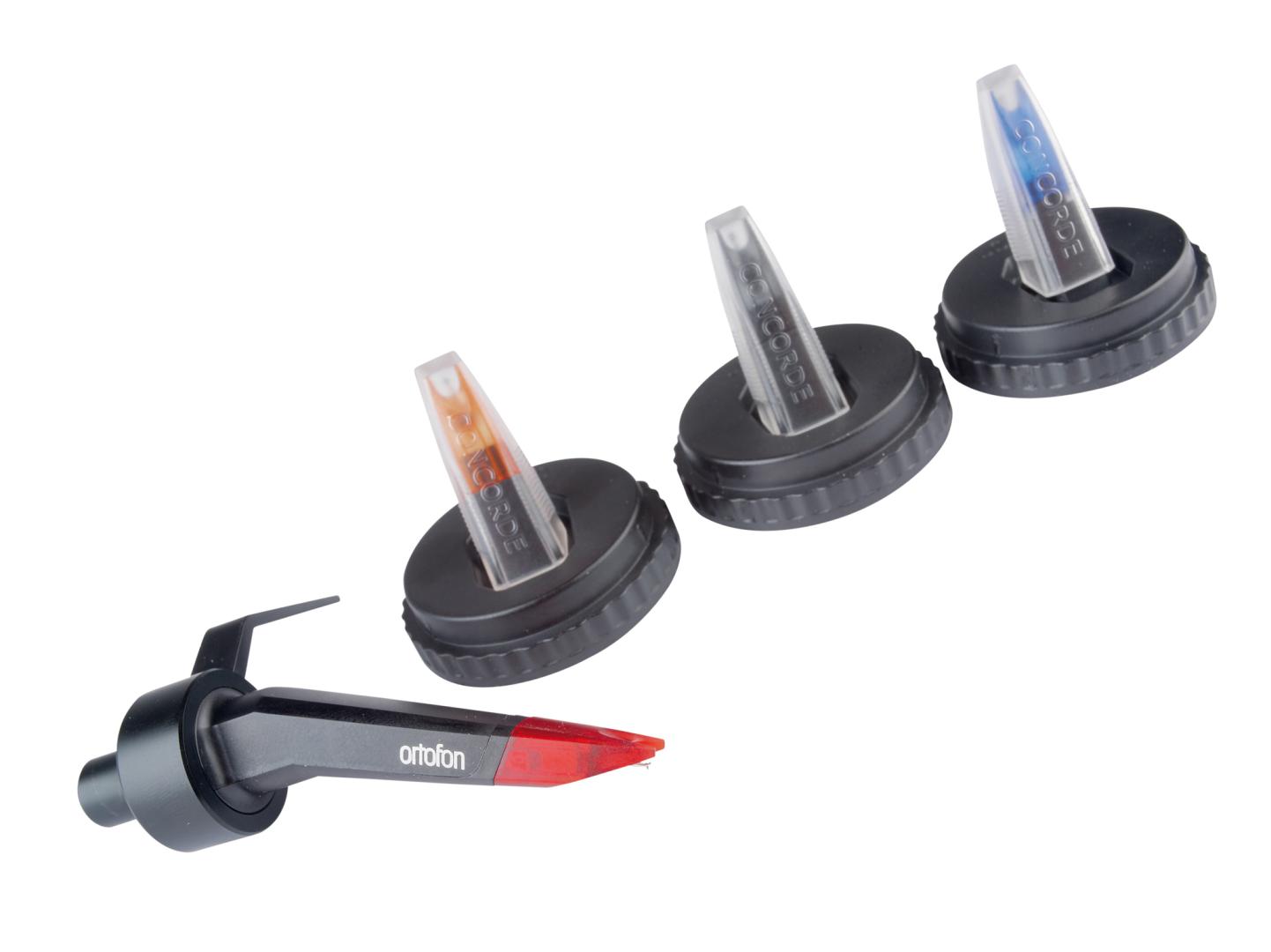 The replacement needles are supplied in cleverly designed packaging
The replacement needles are supplied in cleverly designed packaging
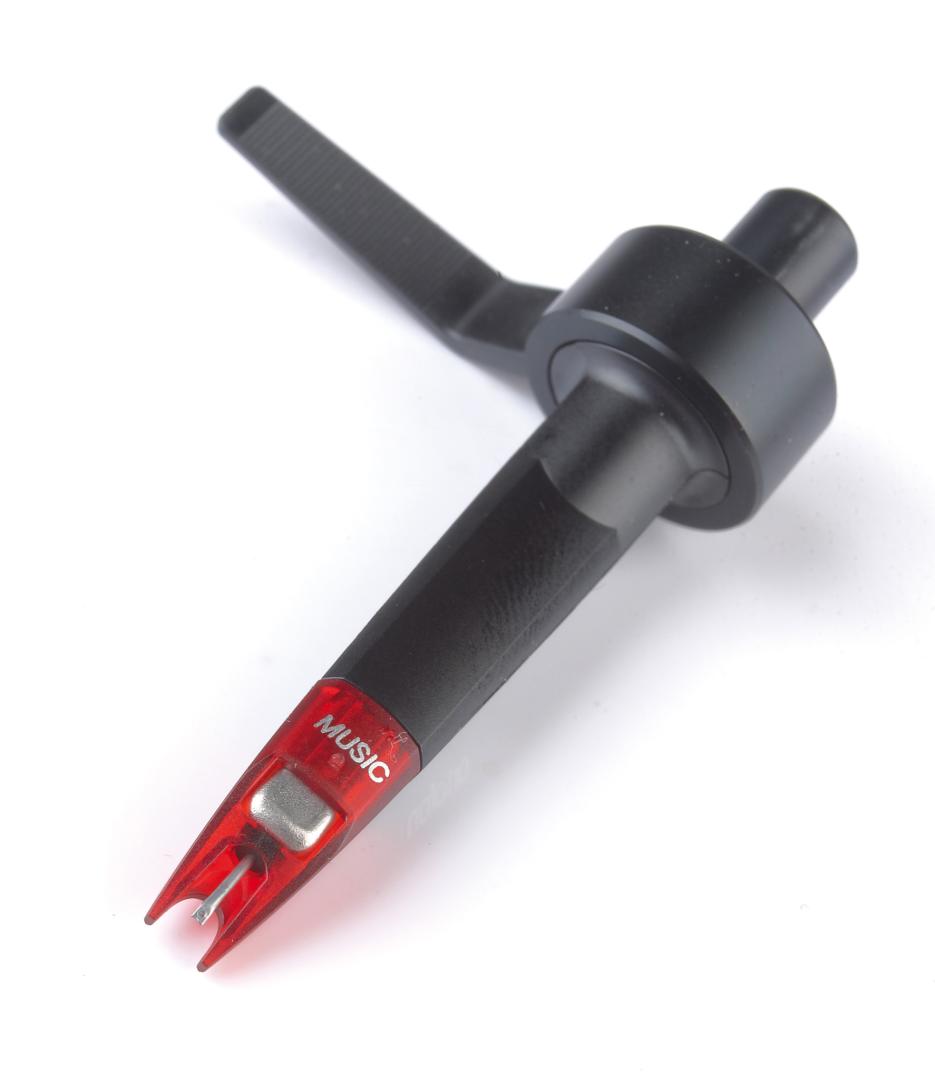 The Concorde Music Red model is the entry point into the series.
The Concorde Music Red model is the entry point into the series.
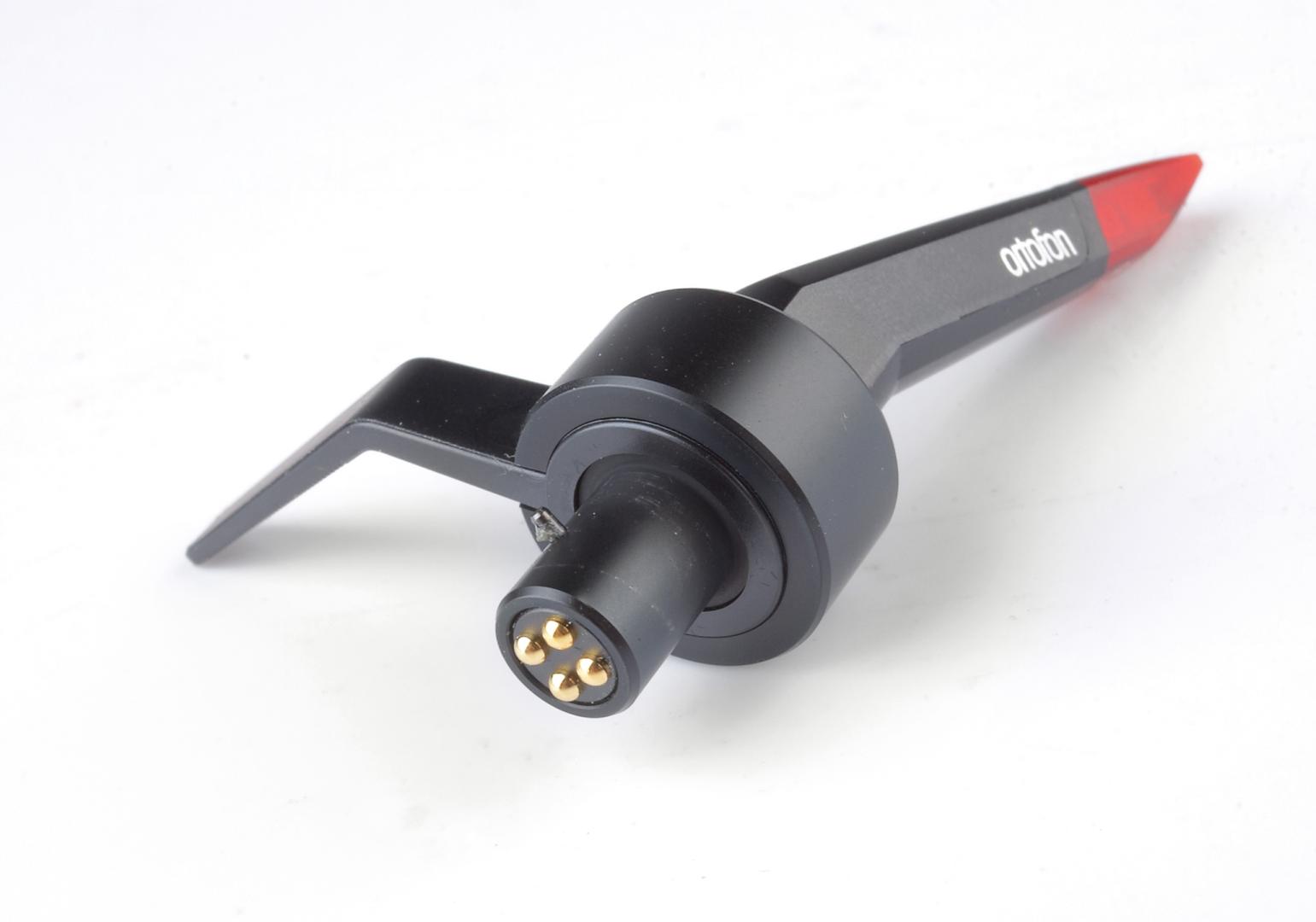 The first system in the Concorde series appeared as early as 1979
The first system in the Concorde series appeared as early as 1979

